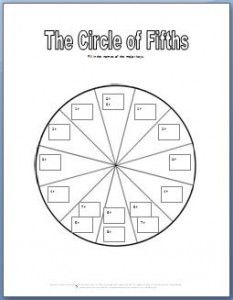Differences Between Trial Balance & Balance Sheet
Contents
Each of these components shows a different aspect of a company’s operations. The balance sheet summarizes and reports the balances from the asset, liability, and stockholders’ equity accounts that are contained in the company’s general ledger. A balance sheet and trial balance are two important reports of the accounting system. The balance sheet is one of the three financial statements that a company needs to file mandatorily under accounting principles. On the other hand, the trial balance is usually for the internal purposes of the company.
Balance sheet is mostly prepared only at the end of the accounting year. On the other hand, the balance sheet is saved as an essential document for an organization. A balance sheet can only be made when all accrual entries have been adjusted. Let, the following be the trial balance of a consulting company, XYZ. The proper arrangement of the assets, liabilities, and stockholder’s equity is necessary. “Types of accounting errors Archives.” Finance and Accounting simplified.

This statement has a list of all accounts with the financial systems. Therefore, any head with a general ledger account will also appear on the trial balance. From the general ledger, the software calculates the closing balances for accounts. From there, this information helps in the preparation of various financial statements. However, the balances on the trial balance may go through some adjustments before reaching those statements.
Balances of all personal, nominal and real accounts are shown. Next step after preparation of trading account and profit and loss account. Firms will prepare the balance sheet based on the transferred balance from the P&L account. Assets, liabilities, and capital are shown in the balance sheet. A trial balance can be prepared without making any adjustments. A trial balance is not mandatory to be prepared according to the law.
Ledger Entry
To understand trial balance, we need to start from debit, credit, journal, and ledger. If these four concepts are digested, trial balance becomes easy. Balance sheet is prepared in ‘T’ format with assets on the right side and liabilities on the left side. The management of an organization uses the balance sheet to understand financial implications of the business operations and to ascertain future course of action for the business. The balance sheet aggregates multiple accounts, while the trial balance presents information at the account level .
- This would then be rectified so that the trial balance is perfectly balanced.
- It is used for the verification of actual amounts from various ledgers.
- Similarly, it helps them determine whether the total debit and credit balances are equal.
- Prepare vertical balance sheet for the following trail balance.
A balance sheet is created to show the right picture of financial affairs to the stakeholders. Trial balance is done by taking the end balances from general ledgers. A balance sheet is done by using the trial balance as a source. Term Debt AccountLong-term debt is the debt taken by the company that gets due or is payable after one year on the date of the balance sheet. It is recorded on the liabilities side of the company’s balance sheet as the non-current liability. Creating this account balances the trial balance until the error is discovered temporarily.
Accounts having debit balances are shown on the asset side and credit balances are shown on the liabilities sides and both sides should be matching. Nominal account balances from trial balance are posted to the income statement to derive the net profit. Afterwards, this net profit as well as the balances of real and personal accounts from the trial balance is transferred to the balance sheet. Balance sheet is prepared in ‘T’ format with assets recorded on the right and liabilities recorded on the left. The format for the trial balance usually includes three columns. It consists of the account name column with two for debit and credit.
What is the Balance Sheet: –
The trial balance will not come under the financial statement. But, the balance sheet comes under one of the financial statements. Profit and loss(P&L) will refer to your financial statement. It occupies and summarizes all your business’s https://1investing.in/ expenses, revenue, and costs caused during the specific time. The main purpose of preparation of trial balance is to check arithmetical accuracy of books of accounts. Nominal account balances are accounted for through profit and loss a/c.
Opening stocks are taken into consideration while preparing a trial balance. In contrast, closing stocks are considered while preparing a balance sheet. The law requires that all companies prepare balance sheets, and it needs to be authorized by an auditor.

You can see that the transaction has two-fold consequences which balance each other. First, under the balance sheet, these two accounts get balanced. In this section, we will look at a complete trial balance, and then in the next section, “What is Balance Sheet?
The above-mentioned differences between Balance Sheet and Trial Balance are related to their purpose, format, content, stage in accounting, exceptions, etc. Credit the account whose assets/expenses decrease and the liabilities/revenues increase. A balance sheet can be presented in two formats – report form and difference between balance sheet and trial balance account form. The main purpose is to detect if there are any numerical errors that might have occurred while the double-entry system of accounting. Depreciation is a non-cash expense which is recognized in order to account for the deterioration of fixed assets to reflect the reduction in useful economic life.
General LedgerA general ledger is an accounting record that compiles every financial transaction of a firm to provide accurate entries for financial statements. The double-entry bookkeeping requires the balance sheet to ensure that the sum of its debit side is equal to the credit side total. A general ledger helps to achieve this goal by compiling journal entries and allowing accounting calculations. A balance sheet is a financial statement which shows the position of assets and liabilities of an organisation for a given period. This date that the balance sheet is prepared is generally the last date of the accounting period i.e Prepare a balance sheet at December 31, 20…
Differences between trial balance and balance sheet:
When there is a disagreement in the debit and credit side of the trial balance, then the trial balance is tallied by transferring the difference in the suspense account. It is a very important part of the financial statements and financial accounts. Dedicated columns of debit and credit are displayed in a trial balance. The total of assets, liabilities and stockholders equity are displayed in an ideal format of a balance sheet. Trial balance includes the balances of all real, personal and nominal account. The balance sheet is intended for external use, while the trial balance is for use within the accounting department and by auditors.

Every company, firm, and organization has a clear account of profits and losses that they have earned. These accounts depict the financial condition of the organization. Moreover, many journals and ledgers are also maintained wherein the names of shareholders and investors are listed.
A trial balance sheet is divided into the ‘debit’and ‘credit’columns to record the same on certain dates. Since trial balance is not part of the financial statement, it does not need to be audited. On the other hand, the balance sheet is an important financial statement and thus, needs to be audited wherever applicable. Usually, balance sheet is prepared at the end of accounting year.
This is an expense recorded in accounts before the payment is made. Financial AssetsFinancial assets are investment assets whose value derives from a contractual claim on what they represent. These are liquid assets because the economic resources or ownership can be converted into a valuable asset such as cash. Intangible AssetsIntangible Assets are the identifiable assets which do not have a physical existence, i.e., you can’t touch them, like goodwill, patents, copyrights, & franchise etc.
Purpose for preparation
Balance sheet on the other hand plays a more pivotal role in the accounting cycle as it is reported externally and relied upon by several stakeholders. The balance sheet thus is a snapshot of what the company owns and what the company owes including the value of owner’s equity. The balance sheet is important for various stakeholders to understand the financial position of an organisation at any specific point. Various key ratio analysis can also be done from the information presented in the balance sheet. A balance sheet is the synopsis of the company’s monetary position. The balance sheet of the company comprises of three parts, i.e., liabilities, assets, and the owner’s equity.
These ledgers hold the debit and credit balance of the company. The final profit and loss statement is shown in the annual balance sheet along with the other financial reports. The primary goal of preparing a trial balance is to verify the arithmetical accuracy of the accounts. In a double entry system of accounting, each journal entry has an equal debit and credit balances i.e., the debit balances equal credit balances. The second, in contrast, is to ensure the debits and credits are equal. Once companies meet these purposes, the trial balance is ready for further usage.
It is primarily a summary and report on the balances generated out of liabilities, assets and the equity accounts held by stockholders in the general ledger of a company. Primarily, the trial balance is used internally by accountants and auditors to inspect the arithmetical accuracy of books of accounts. On the other hand, balance sheet plays a more important role in the accounting cycle as it is reported externally and trusted by several stakeholders of the company. Accountants and auditors thus focus on ensuring that the balance sheet presentation is accurate.
Trial balance is prepared once all journal entries are posted to the respective ledger accounts and each ledger account is totaled and balanced. It is presented in columnar format, with debit account balances recorded on the left and credit account balances recorded on the right. A trial balance is a report that is used internally within the company, while the balance sheet is usually released to investors and financial institutions outside the company.



Không có bình luận